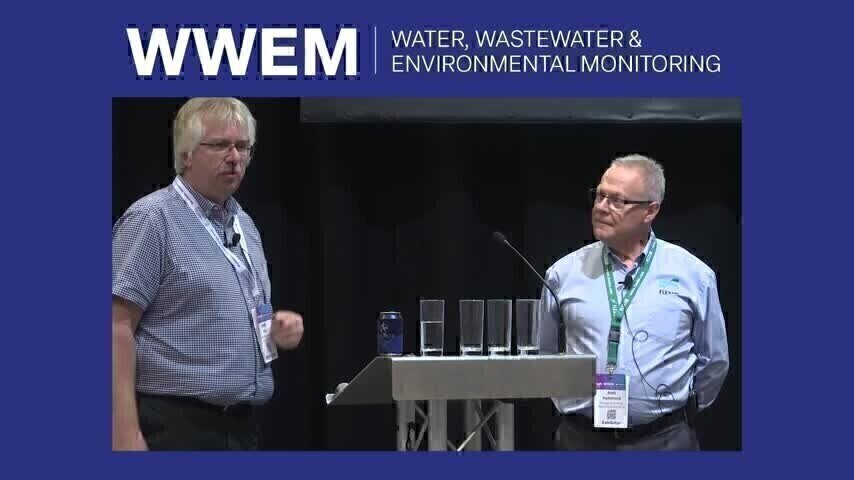E-Learning
Videos
Past Events
Regulatory update on the Industrial Emissions Directive, including the Best Available Techniques Reference document (BREF) for Large Combustion Plant, and also the requirements of the Medium Combustion Plant Directive.
This eLearning session is for anyone analyzing residual solvents or interested in quantitative GC-Headspace analyses. GC-Headspace is a powerful technique for the analysis of volatile compounds in neat samples or in a variety of matrices. A major use of GC-Headspace is the analysis of pharmaceutical drugs, as well as intermediates and excipients for the presence of residual solvents that may be left over from the manufacturing process. The sample that is analyzed by this t...
We present a detailed description and experimental results for a new gas emission survey method that remotely detects and maps the locations of multiple gas emission sources distributed across an extensive area. Our method, which we call LightSource, not only localizes but also estimates the mass emission rates of each of the detected sources. The approach is generally applicable to any airborne contaminant that is passively transported and conserved during transport within the area of intere...
If you're looking for professional advice on methane analysis by means of an open-path laser-absorption spectrometer or laser-dispersion spectroscopy, follow the links for the relevant e-Learnings. Similarly, if you're in need of information on hyperspectral infra-red imaging for any-state methane, take a look at Jean-Phillipe Gagnon of Telops Inc.'s lecture on the topic. Finally, click through to find an overview of new sensor technologies for methane analysis. Tunable diode...
If you're looking for professional advice on methane analysis by means of an open-path laser-absorption spectrometer, follow the link for the relevant e-Learning. Similarly, if you're in need of information on hyperspectral infra-red imaging for any-state methane, take a look at Jean-Phillipe Gagnon of Telops Inc.'s lecture on the topic. Finally, click through to find an overview of new sensor technologies for methane analysis. Laser Dispersion Spectroscopy (LDS), is a new gas...
If you're looking for professional advice on methane analysis by means of an open-path laser-absorption spectrometer or a mid-infrared tunable-diode laser spectroscope, follow the links for the relevant e-Learnings. Similarly, if you're in need of information on hyperspectral infra-red imaging for any-state methane, take a look at Jean-Phillipe Gagnon of Telops Inc.'s lecture on the topic. In 2014 the US Department of Energy's ARPA-E program initiated MONITOR, a 45M US$ investmen...
We present a case study of a validation experiment to characterise the precision and uncertainty constraints of a newly developed mass balancing flux calculation method, using in situ measurements of methane concentration sampled by an unmanned aerial vehicle (UAV) platform. This case study (funded by the UK Environment Agency) was conducted by the University of Manchester and National Physical Laboratory with assistance from the UK Met Office at its Cardington research facility. The aim...
National Grid Plc is incentivised by the Office of Gas and Electricity Markets (Ofgem) to conduct research into new techniques to enable National Grid Gas (NGG) to improve understanding and transparency, and allow for cost-effective mitigation, of greenhouse gas (GHG) venting on the National Transmission System (NTS). The mechanism by which this is done is special condition 8J of the Gas Transporters Licence, the Greenhouse Gas Investigation Mechanism (GHGIM). Since 2008 NGG has conducted...
Atmospheric methane (CH4) has a powerful short-term global warming impact, and comes from a variety of natural and anthropogenic sources. Methane sources include wetlands, landfills, oil / gas / coal extraction activities, and urban emissions from traffic and the natural gas distribution system. Characterizing the magnitude and the origin of these fugitive emissions spatially and temporally is critical to understand their present and future climate impacts. There are two tracer molecules...
Methane is one of the most important gaseous hydrocarbon species for both industrial and environmental reasons. Understanding and quantifying methane emissions to atmosphere is an important element of climate change research. Range-resolved infrared Differential Absorption Lidar (DIAL) measurements provide the means to map and quantify a wide range of different methane sources. DIAL is a powerful technique that can be used to track and quantify plumes emitted from area emission sources suc...
Digital Edition
Asian Environmental Technology 27.2 - April/May 2023
May 2023
In This Edition Business News - Celebrating The Life Of A Gas Measurement Industry Icon - A New Home For Gas Sensor Specialists - Envea Completes The Acquisition Of Hycontrol Ltd Environ...
View all digital editions
Events
Jul 02 2023 Albena, Bulgaria
Jul 04 2023 Cardiff, UK
Jul 05 2023 Johannesburg, South Africa
Jul 11 2023 Shanghai, China
Jul 11 2023 Lagos, Nigeria
























